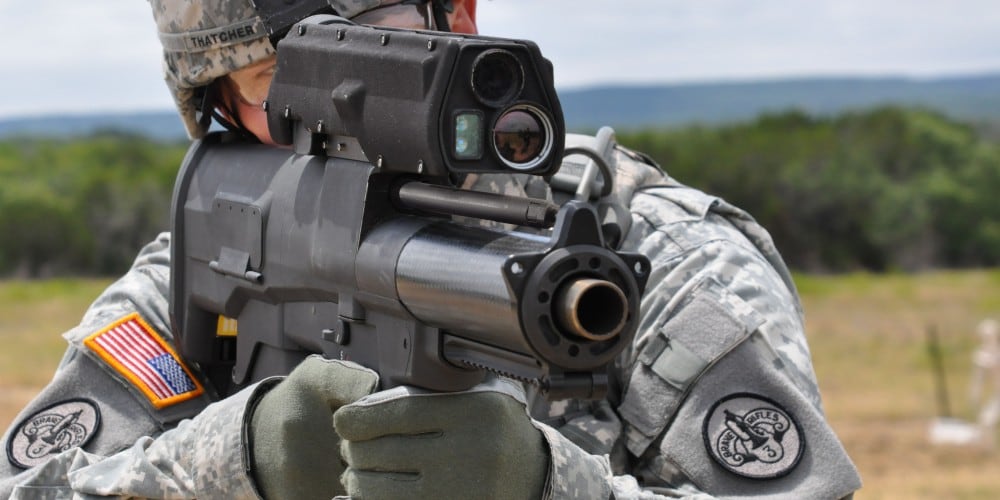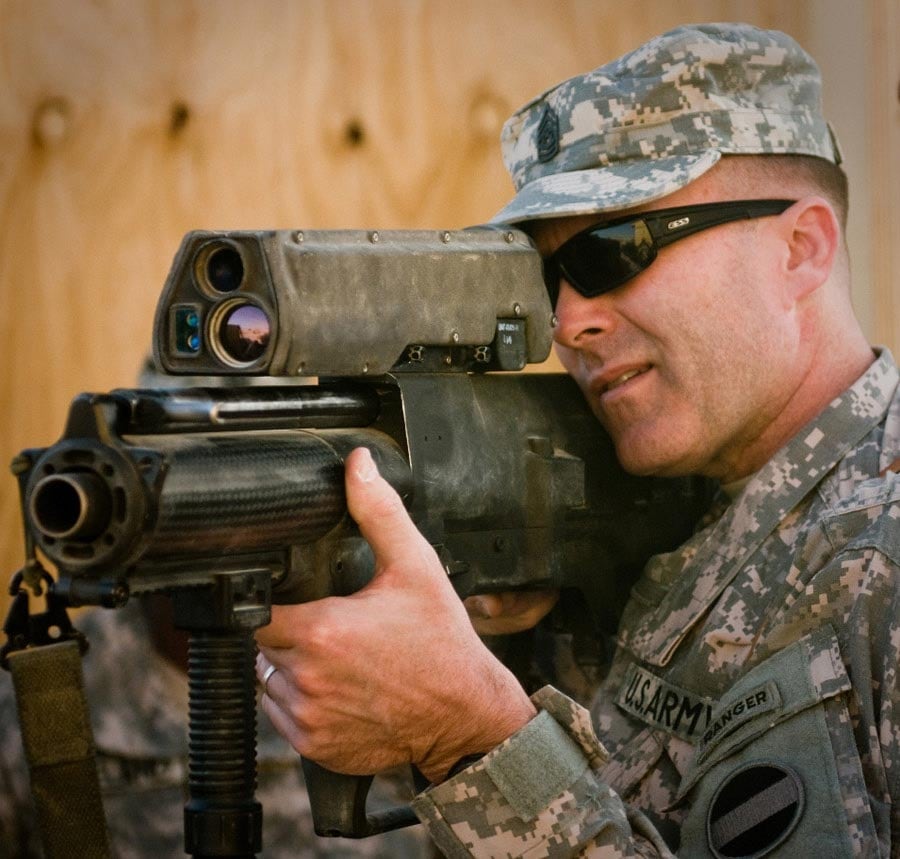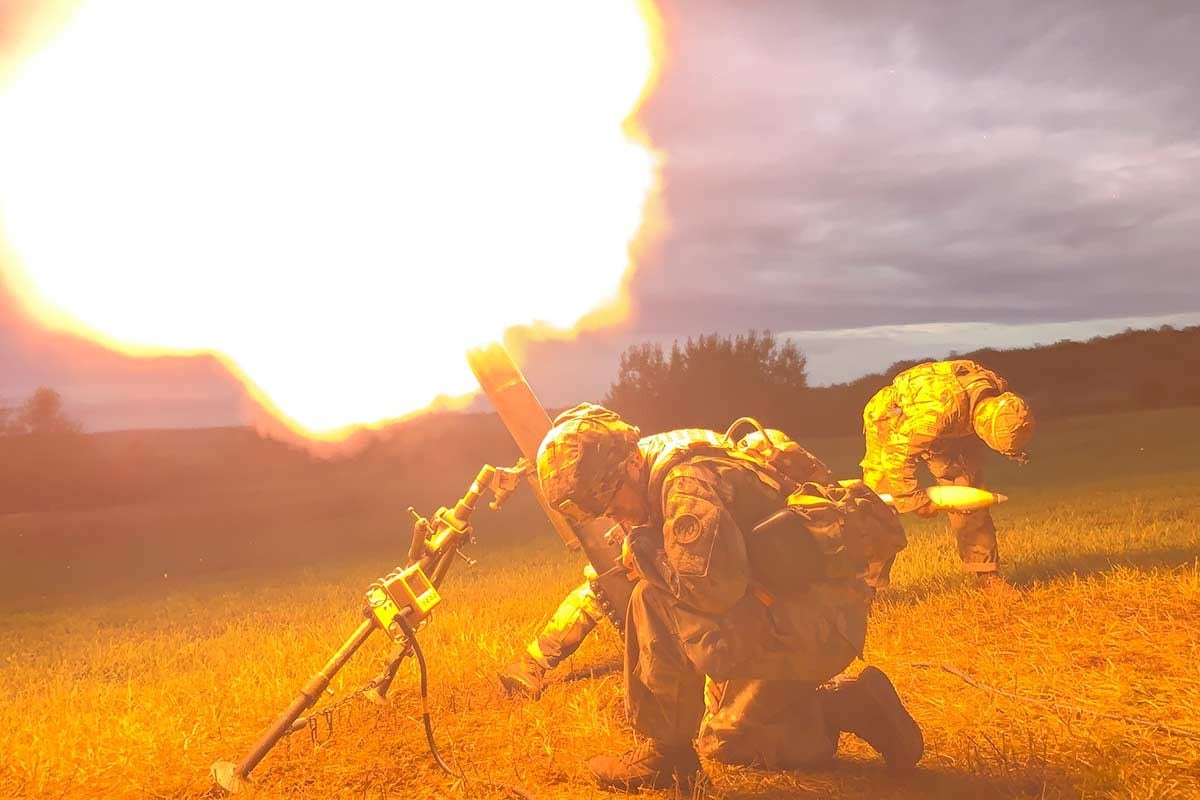The Army is restarting the search for a way to fill the biggest capability gap in the infantry squad — counter-defilade firepower.
During panel discussions Thursday and Friday at the National Defense Industrial Association’s annual Armaments, Robotics and Munitions conference, weapons and munitions directors noted the need for a solution to that problem.
It’s the “Number One capability gap for the (Maneuver Center of Excellence),” Lt. Col. Pete Stambersky, the Army’s product manager for individual weapons, said Friday.
RELATED

Counter-defilade is essentially a way to overcome barriers or obstacles that opponents might use for cover.
It requires either a precisely placed round, fired in an arc, to defeat the obstacle or an airburst munition that can neutralize an adversary after clearing the obstacle.
Grenades can provide that, but have limited range and accuracy. Grenade launchers help, but don’t nail down the precision. Loitering drones and other higher-echelon weapons are relevant assets, but not organic to the squad-level fight.
Mortars are used and some rounds specific to counter-defilade have been used, but have not provided the best solution.
Though the project is in its beginning stages, it takes off from years of efforts that produced the XM25, a 25mm counter-defilade weapon that ultimately received poor reviews in soldier testing and was considered such a liability that soldiers reportedly opted not to take it on patrols in Afghanistan.

That effort took nearly a decade and was canceled in July 2018. But it had sat in a kind of limbo status since 2016 after failures in field testing, which had started in 2010 after nearly a decade of development.
In the interim, soldiers are looking to air-bursting rounds that can be fired from the M320 grenade launcher and using the 84mm Carl Gustaf recoilless rifle for larger obstacles, but those ride on two ends of the counter-defilade spectrum, too little for some targets and a bit of overkill for what needs to be carried within a squad.
The new program will open up the type of munition to meet the counter-defilade problem at the squad level, but Stambersky said the weapon must have variable power magnification in its fire control, a range of at least 1,000 meters and a “family of ammunition.”
And that’s just on the hardware side.
The precision grenadier system must also work within the Adaptive Squad Architecture, a kind of software and powered backbone to individual soldier weapons being developed by Program Executive Office–Soldier.

The weapon must also work with one or both of the recently fielded Enhanced Night Vision-Binocular or the Integrated Visual Augmentation System, IVAS, expected to begin fielding in about a year.
The IVAS allows for users to see their weapon sights in the goggle and shoot around corners or over obstacles using rapid target acquisitioning software, a handy capability should a soldier or Marine need to maintain cover while targeting with counter-defilade munitions.
On a Thursday panel, Col. Rhett Thompson, director of the Soldier Requirements Division, said they expect a system by 2028.
Thompson admitted that the squad-level counter-defilade isn’t a problem that’s going away.
“One of our challenges continues to be counter-defilade because of one thing that happens when you start the firefight … everybody goes down, everybody goes to ground,” he said.
Todd South has written about crime, courts, government and the military for multiple publications since 2004 and was named a 2014 Pulitzer finalist for a co-written project on witness intimidation. Todd is a Marine veteran of the Iraq War.




